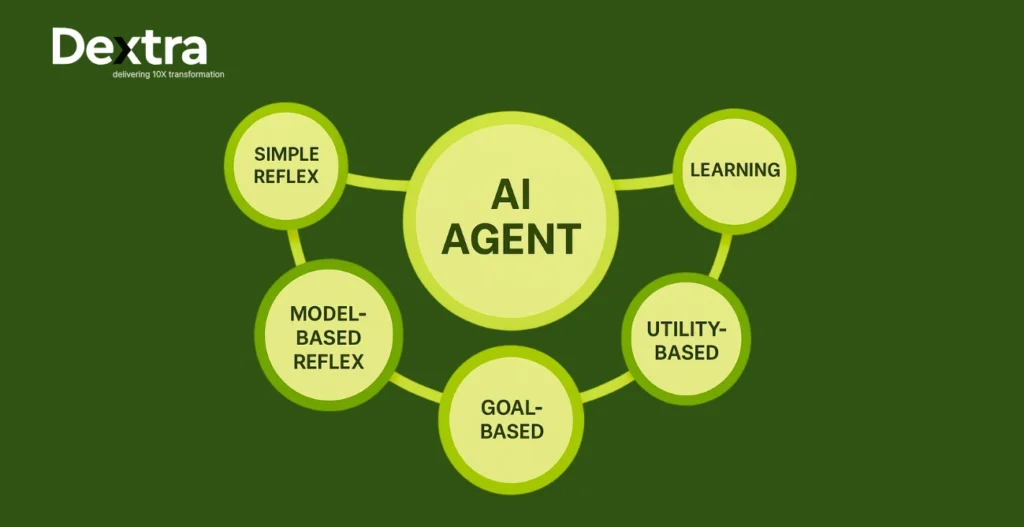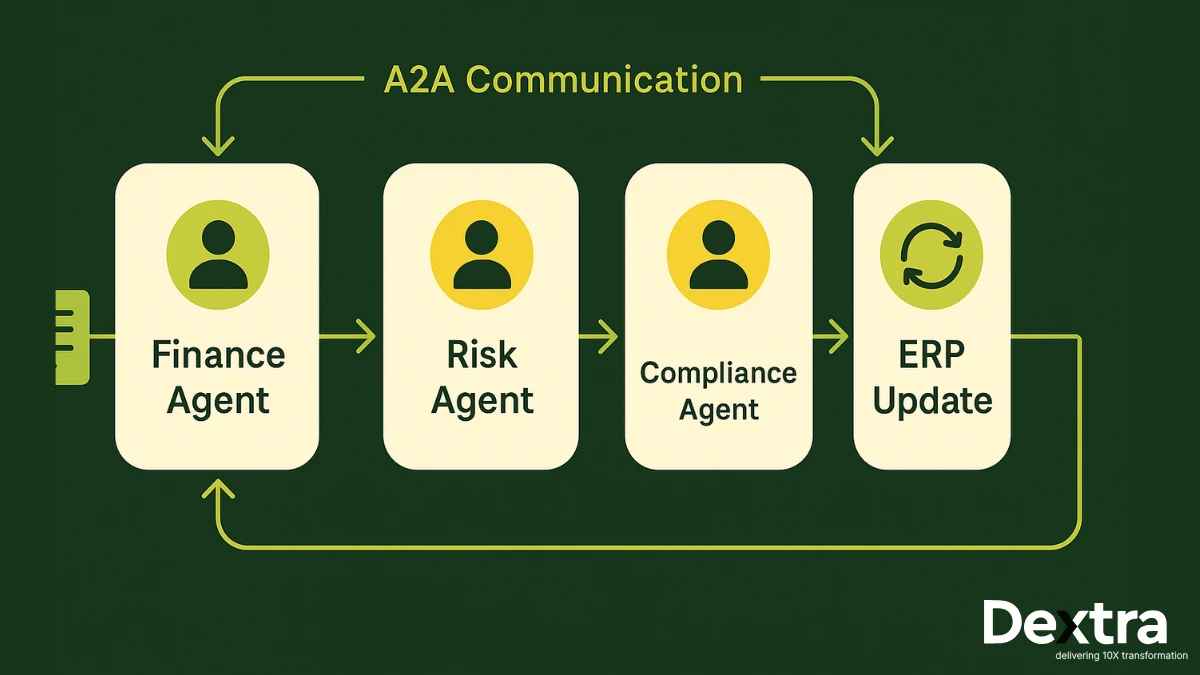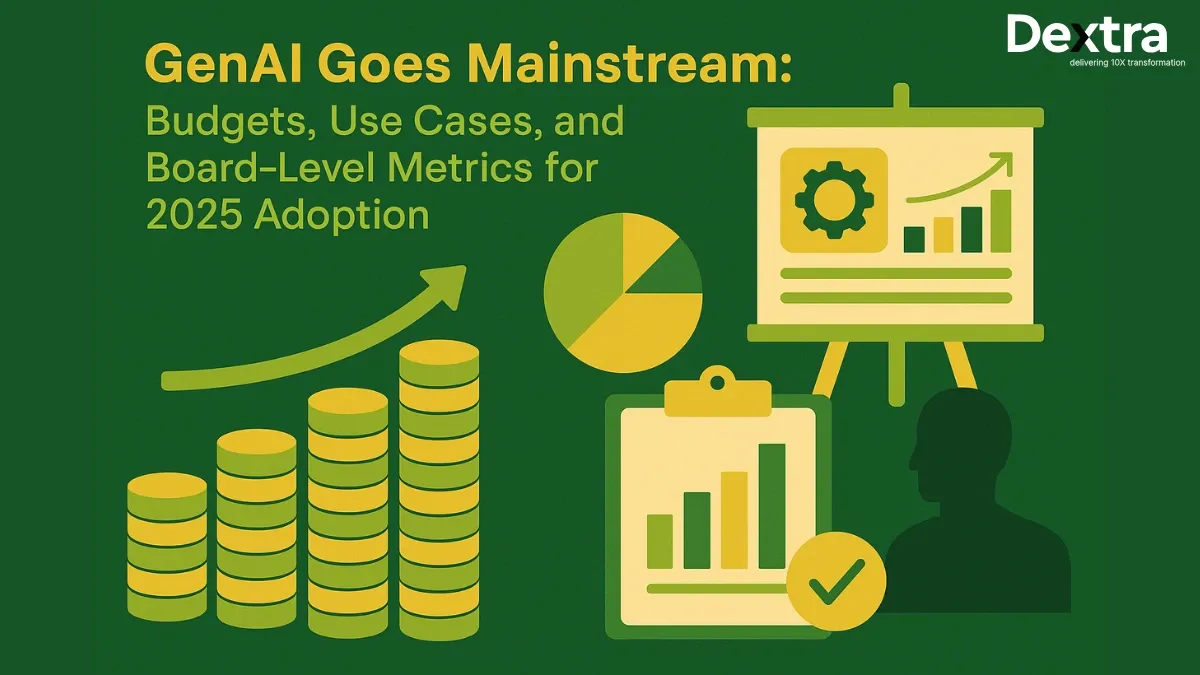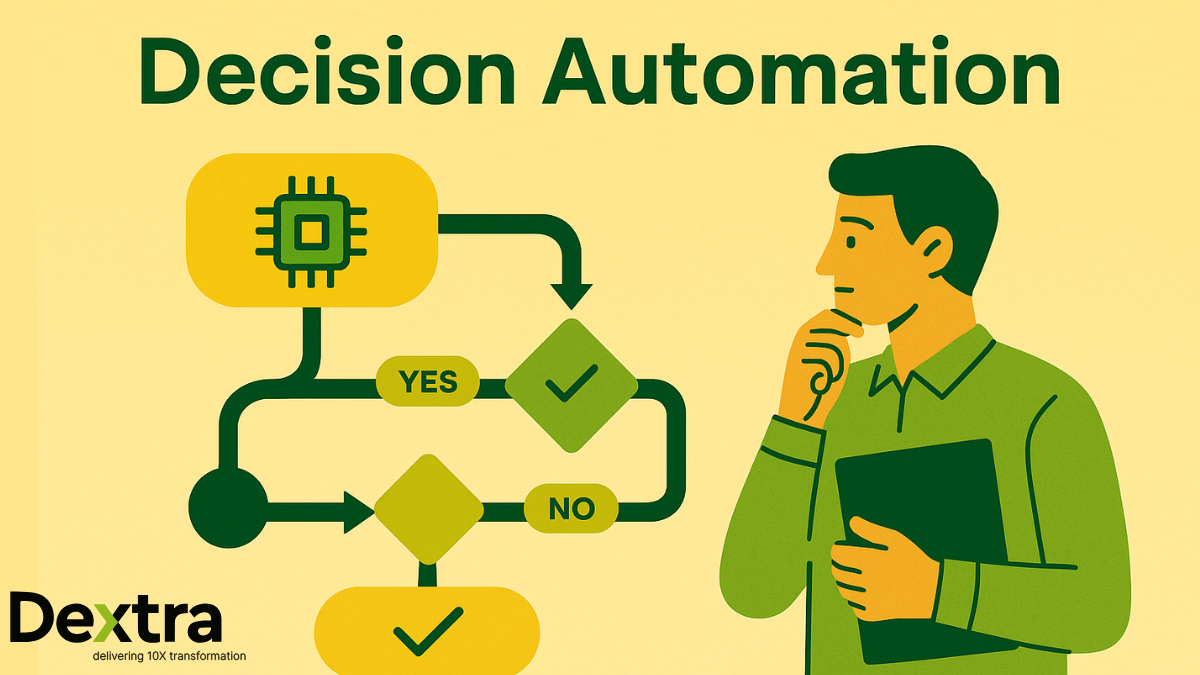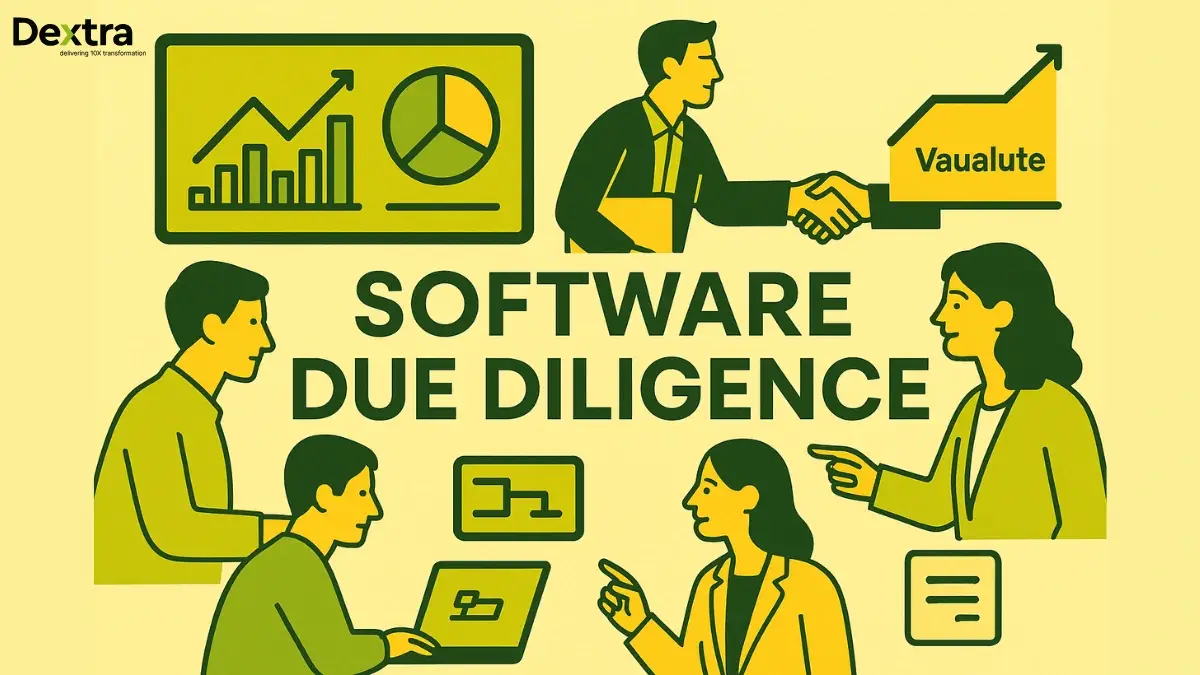According to Litslink, by 2025, 85% of enterprises are expected to use artificial intelligence agents, reflecting their shift from optional tools to essential business infrastructure.
AI has brought a major change to how machines respond to the world by enabling them to perceive, reason, and act just like us. Many AI systems depend on the use of intelligent agents that act and make choices depending on their environment.
These agents can be anything from simple rule-based programs to advanced models that learn and adapt with experience. By 2025, every business owner should understand the types of AI agents because they will shape both daily activities and what the company aims for in the future.
At Dextralabs, we offer AI Agents Development Services designed to help organizations build intelligent, purpose-driven agents—whether for automation, customer experience, or complex decision-making. As a trusted AI agent development company, we ensure businesses are equipped with scalable solutions that evolve with their goals.
If you’ve ever asked yourself, “What are different types of AI agents?”—you’re definitely not alone. At Dextralabs, Let’s discuss types of AI agents with diagrams and examples, so you can make smarter, more informed decisions for your team and your organization.
What is AI Agents?
AI agents – the virtual assistants built with artificial intelligence – automate processes, generate insights, and optimize performance. Depending on the ways in which they make decisions, adapt to new situations, and interact with their environment, AI agents take on different forms. They are categorized into five main types:
- Simple Reflex Agents
- Model-Based Reflex Agents
- Goal-Based Agents
- Utility-Based Agents
- Learning Agents
Each one plays a unique role, and understanding them will help you decide which fits your business needs best.
The 5 Core Types of AI Agents (With Examples):
1. Simple Reflex Agents
These are the most basic types of AI agents. They respond directly to what’s happening around them using predefined rules—no memory, no reasoning, just action.
How They Work:
They check conditions and act accordingly. That’s it.
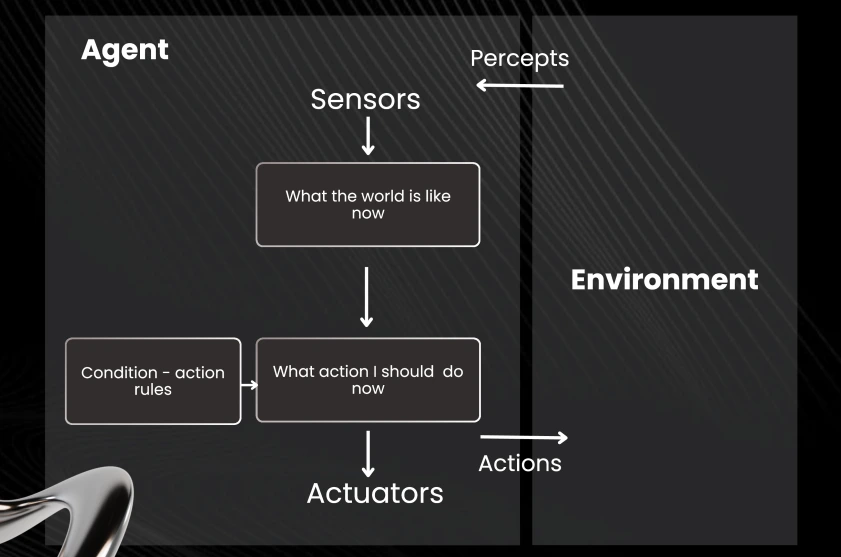
Example:
A thermostat is a perfect example. When the temperature drops below a set point, it turns the heat on—no thinking involved.
Ideal For:
Simple, repetitive tasks where fast response matters more than strategy.
2. Model-Based Reflex Agents
These agents keep an internal model of their environment, so they don’t just react—they actually think things through. They can look at the current situation, weigh the possible outcomes of different actions, and then decide what to do next. A great example? A self-driving car. It uses past data and current conditions to make smart driving decisions in real time.
How They Work:
They evaluate current input and past states to choose a better response.
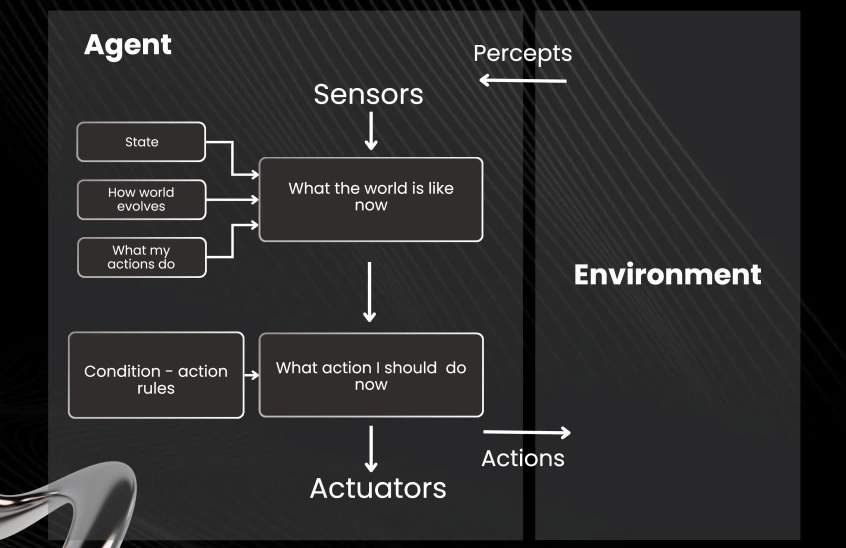
Example:
A self-driving car is a great example. It tracks road conditions, previous turns, and nearby vehicles to adjust its driving.
Ideal For:
Autonomous machines, robotics, and smart environments.
3. Goal-Based Agents
Goal-based agents are all about purpose. They’ve got a clear objective, and they plan their actions to reach it. Instead of just reacting, they think ahead and choose steps that move them closer to their goal. For example, think of a fitness app that tracks your daily activity and suggests workouts—it’s using your data to help you hit your fitness targets. That’s a goal-based agent in action.
How They Work:
They evaluate potential actions based on whether they’ll help achieve the goal.

Example:
Think about a fitness app that tracks your steps and suggests workouts. Its goal is to improve your health, and it chooses strategies that get you closer to that goal.
Ideal For:
Systems that need to adapt to changing conditions to meet a goal.
4. Utility-Based Agents
These agents are all about making smart choices. They’re usually assigned a specific function and often work alongside other agents to get tasks done. What sets them apart is how they use advanced reasoning to compare different options and pick the one that gives you the best result.
Let’s say you need to query a database, send an email, or retrieve a document—a utility-based agent can handle that. It examines all the potential results it can produce in order to select the most advantageous based on a utility function. It’s not just about getting things done but it’s about doing them in the most effective way.
How They Work:
They assign a value (utility) to each possible outcome and pick the one with the highest score.
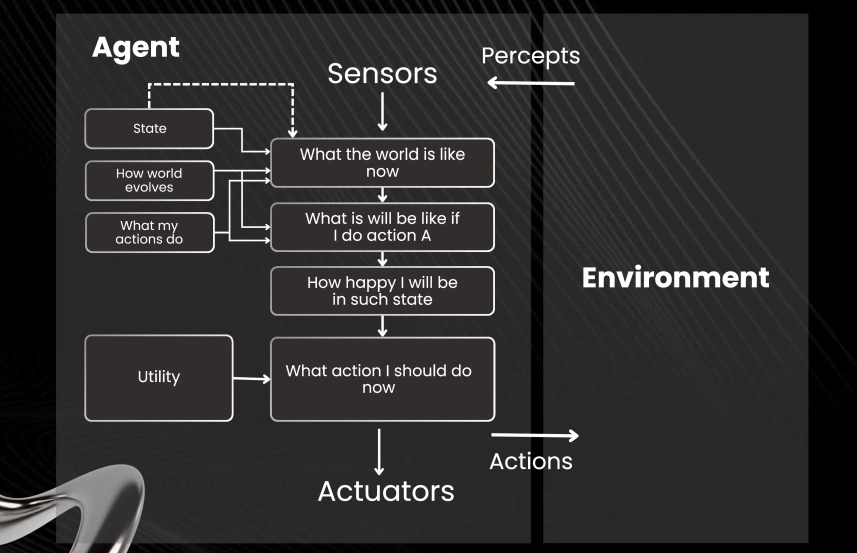
Example:
A utility-based agent would scan possibly thousands of product options, customer preferences, and past behavior to recommend the perfect item.
Or a self-driving car might balance speed, safety, and fuel efficiency to pick the best route.
Ideal For:
Complex environments with trade-offs and multiple desirable outcomes.
5. Learning Agents
Learning agents are like the AI that never stops improving. They don’t just follow fixed rules—they learn from experience. Over time, they refine their behavior based on the data they collect and the feedback they get.
They prove to be very beneficial when you require your systems to evolve quickly or gain additional intelligence as they run.
How They Work:
They use feedback from the environment to adjust behavior. The more they interact, the better they get.
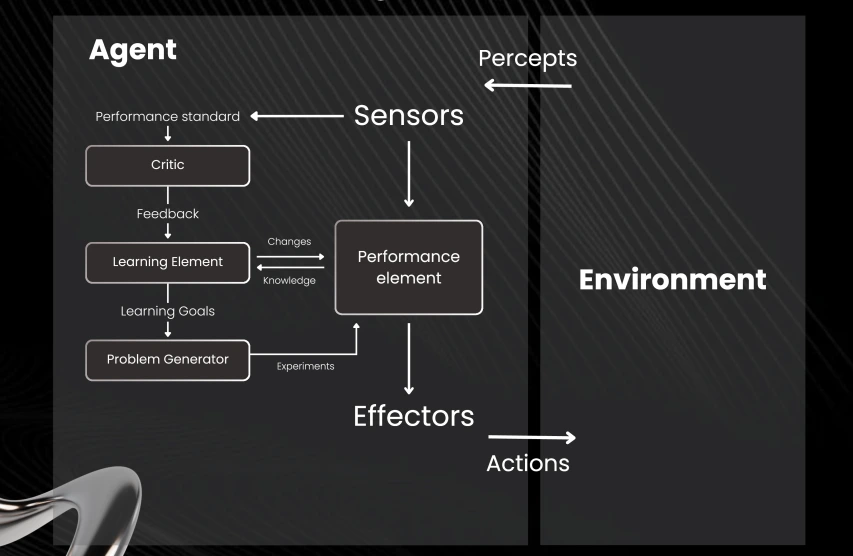
Example:
A spam filter is a classic example. It starts with basic rules, then learns from what you mark as spam and what you don’t, improving its accuracy over time.
Ideal For:
Dynamic environments like customer support, personalization, NLP-based assistants, and predictive systems.
Extended Architectures: Going Beyond the Core 5
Hierarchical Agents
These agents break complex tasks into manageable chunks. They operate on multiple levels of abstraction—low-level agents handle specific tasks, while high-level agents manage strategy.
- Example: In a smart city, low-level agents might manage traffic signals, while high-level agents optimize traffic flow city-wide.
Multi-Agent Systems (MAS)
Sometimes, it’s not about one super-agent—it’s about multiple agents working together. Each handles a different task, and together, they achieve a shared goal.
- Example: In a smart factory, different agents might:
- Control machines (reflex agents)
- Monitor production status (model-based agents)
- Plan manufacturing schedules (goal-based agents)
- Optimize resources (utility-based agents)
- Improve efficiency over time (learning agents)
This orchestration of agents is where real AI power shines.
Wrapping It Up: Why AI Agent Types Matter for Businesses in 2025
So, now that we’ve explored the types of AI agents, it’s clear that understanding the agent architecture in AI isn’t just a tech detail—it’s a strategic advantage. Whether you’re looking at a simple reflex agent or a highly adaptable learning agent in AI, each plays a unique role in how systems think, react, and improve.
By combining different agent types—like the rational agent in AI that always aims to make the best decision, or the utility-based agent in AI that chooses the most beneficial action—you can build powerful systems that not only automate tasks but actually improve how your business runs day-to-day.
As we head deeper into 2025, businesses that invest in the right mix of AI agents will be better equipped to handle change, scale efficiently, and deliver smarter, faster solutions. Artificial intelligence agents already make a difference by speeding up processes and improving customer interactions and they keep improving further.
If you’ve ever asked, “What is AI agents?” or “How many types of AI agents are there?”—now you’ve got the answer.
FAQs on types of Ai Agents:
Q. What are the 5 types of agents in AI?
The five main types are simple reflex agents, model-based reflex agents, goal-based agents, utility-based agents, and learning agents.
Q. What are the 7 types of AI?
The 7 types usually refer to reactive machines, limited memory, theory of mind, self-aware AI, narrow AI, general AI, and super AI.
Q. What are examples of AI agents?
Examples include thermostats (simple reflex), self-driving cars (model-based), fitness apps (goal-based), recommendation engines (utility-based), and spam filters (learning agents).

